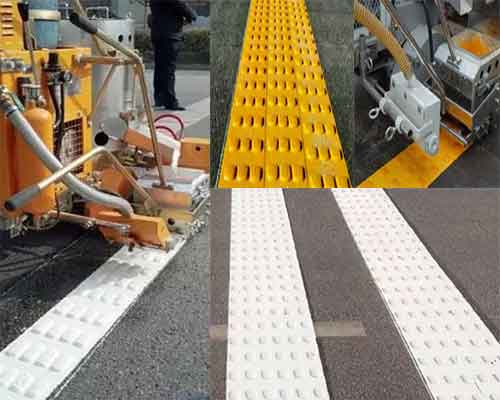Thermoplastic road markings have become common due to their long list of benefits in comparison to their traditional predecessors. But one can easily question why they have become so popular as well as their usefulness in today’s road infrastructure. Well, this post has been written to address these questions as well as highlight the importance of thermoplastic line-markings.
What are Thermoplastic Road Markings?
Before looking at the advantages of thermoplastic road markings, it is essential to understand what they are first. These markings are made from synthetic resin mixed with glass beads that boost their longevity. Furthermore, thermoplastic paint is added in the form of solid powder after which heat is applied to melt it down before surface application. Depending on different types of road markings, color can be added with various pigmentations.
Advantages of Thermoplastic Road Markings
Thermoplastic road markings have many benefits compared to the more traditional road marking techniques. These includes:
High Visibility
Thermoplastic road markings are usually used in cases where pavements and stripes are required to be visible enough to drivers and auto operators. Thermoplastic applications also help in preventing possible collisions and injuries on bike lanes, pedestrian crosswalks, and pavements. When you upgrade to thermoplastic products from your conventional road paints, you find out just how amazingly visible your road markings become.
Speed of Application
Application of thermoplastic road markings is done under high temperature, and thus sets very fast. This way, the application process is sped up and reduces the time taken to complete the road marking project. Additionally, the thermoplastic application is perfect for repairing, replacing, or improving the current worn-out road markings.
Safety Benefits
Any road marking project should consider the safety of pedestrians and drivers. Thermoplastic applications for road markings can be designed to be highly reflective, making them visible even in dark conditions as they reflect the car lights. This attribute helps enhance driver and pedestrian safety. Furthermore, the material can be laid in a thick layer to offer tangible feedback to drivers and other road users. This means that drivers can feel a rumble effect when driving over the marking. This helps keep the driver alert and is especially are useful in risky spots where it can be used to warn drivers to slow down.
Remarkable Skid Resistance
Another unmatched benefit of thermoplastic markings is their exceptional skid resistance when applied to paved surfaces. In situations of heavy rainfall, vehicles and other autos experience high traction when driving over thermoplastic markings. Their skid resistance property allows them to be used in runways, intersections, and dense traffic areas. When you need to use thermoplastic applications on your property, it is crucial to consult with your pavement contractor for more insight on use and application.
A Variety of Applications
Thermoplastic road markings are resilient and can be used in various applications. For instance, car parks and busy roads can utilize these markings. The preformed thermoplastic material PREMARK® is a precut material which is ready to apply on delivery and is applied with a heat torch. Because of its long-term durability and resistance to the weather as well as gasoline, oil etc. it is suitable for high traffic requirements.
Furthermore, their high visibility attributes make them ideal for road markings that allow drivers to have more information about the road. Essentially, they offer more detailed information or markings besides the standard road markings that define lanes and much more.
Conclusion
Thermoplastic markings provide highly visible and long-lasting road marking solutions and their increased use today can be seen as a testament to their long list of benefits. To enjoy all these benefits, find and work with a reliable thermoplastic road marking company. Top of Form
Bottom of Form



Be the first to comment on "5 Advantages of Using Thermoplastic Road Markings"